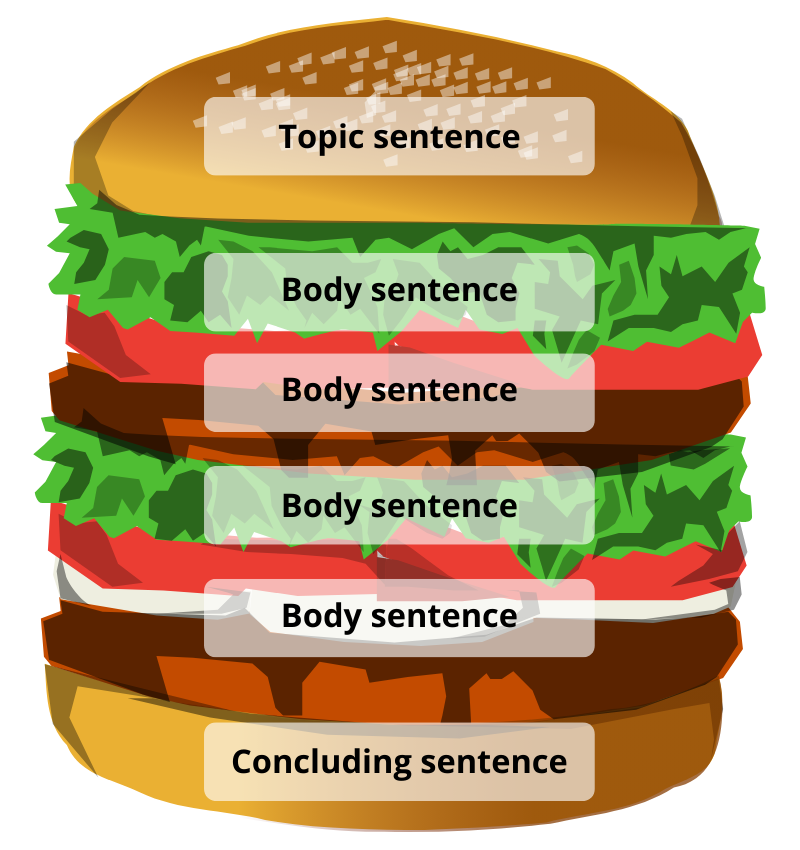Paragraph structure
Learn how to structure a paragraph in a clear and logical way to improve your writing skills.
A paragraph is like a miniature essay
Just like an essay, a paragraph contains three parts;
An introduction > topic sentence
A body > body sentences
A conclusion > concluding sentence.
Each paragraph:
-
Is a distinct section of your writing
-
Focuses on just one clearly defined idea
-
Has to be well organised with all sentences relating to each other, and the topic.
The burger
It's helpful to compare a paragraph to the three parts of a burger; top bun, filling, and bottom bun.

The burger paragraph
The topic sentence describes the main idea of the paragraph. It helps the reader understand what the paragraph is about and the direction your essay is going.
The body sentences are where you expand on the idea introduced in your topic sentence.
> This discussion can include explanations, critiques, examples, opinions, or statistics, with supporting evidence from the literature.
> Make sure everything relates to the paragraph topic.
> You need to reference information you have used from sources such as books, journals and websites.
> Each sentence should connect to the others to create a logical flow.
> Try to flow from the general to the specific.
The final sentence of the paragraph should summarise or conclude the idea that you introduced in the topic sentence. Often it provides a link to the topic of the next paragraph.
Combine your paragraphs to form an essay
Think of your essay as a series of burgers (paragraphs), set out in a logical order.
Introduction > Paragraph > Paragraph > Paragraph > Paragraph > Paragraph > Conclusion

How to write an effective paragraph
Paragraph example
The paragraph below shows the topic, supporting, and concluding sentences.
| Topic sentence | Family issues can be the reason why teenagers abuse alcohol. Teens who have problems at home are more likely to drink or use drugs (Jones, 2021). Low parental supervision may result in teenagers making dangerous decisions around alcohol consumption if they know they can get away with it. According to Smith and West (2021), a lack of social support can also be a contributing factor. A teen with absent parents, a lack of friends and trouble meeting new people may feel lonely and become depressed, turning to alcohol. While family can keep a teenager from self-harm, it can also be a reason for it to occur. |
| Supporting sentences | |
| Concluding sentence |





